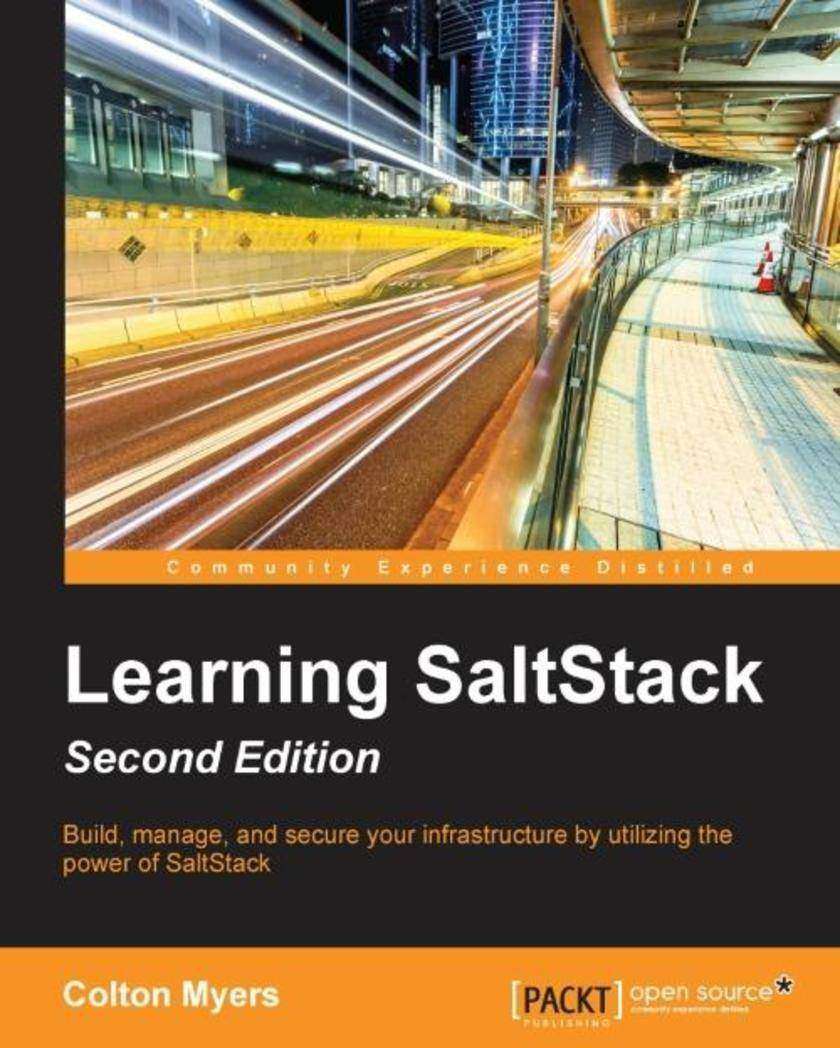
Learning SaltStack - Second Edition
¥63.21
Build, manage, and secure your infrastructure by utilizing the power of SaltStack About This Book First book in the market to incorporate all the latest features of SaltStack. Leverage the power of SaltStack for building, managing and securing your infrastructure. Effectively use commands and control the state of your infrastructure in a jiffy. Who This Book Is For This book is aimed at System Administrators who are looking forward to manage their infrastructure using SaltStack with no prior knowledge about it. What You Will Learn Install Salt on your servers Run commands on all or some of your minions instantly from a central managing server Write custom Salt modules to handle your infrastructure’s unique needs Define the state of your infrastructure and use Salt to enforce that state. Create platform-agnostic state definitions for greater flexibility and power Manage virtual servers on public or private clouds using Salt Cloud Use the event system in Salt to create a reactive and self-healing infrastructure In Detail SaltStack is one of the best infrastructure management platforms available. It provides powerful tools for defining and enforcing the state of your infrastructure in a clear, concise way. With this book learn how to use these tools for your own infrastructure by understanding the core pieces of Salt. In this book we will take you from the initial installation of Salt, through running their first commands, and then talk about extending Salt for individual use cases. From there you will explore the state system inside of Salt, learning to define the desired state of our infrastructure in such a way that Salt can enforce that state with a single command. Finally, you will learn about some of the additional tools that salt provides, including salt-cloud, the reactor, and the event system. We?ll finish by exploring how to get involved with salt and what?s new in the salt community. Finally, by the end of the book, you'll be able to build a reliable, scalable, secure, high-performance infrastructure and fully utilize the power of cloud computing. Style and approach This will be a comprehensive guide on SaltStack along with installation and setting up of Salt on couple of platforms. Then enlightening the readers about remote execution system and configuration management system and ending with concepts of security and best practices.
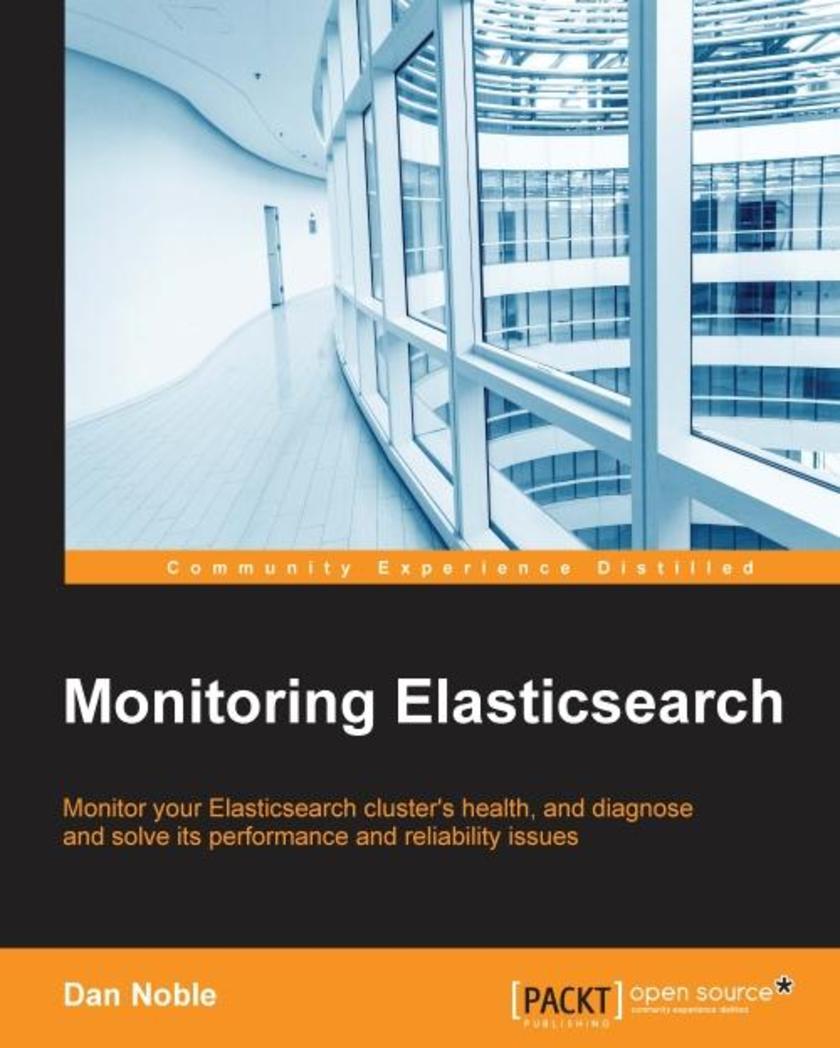
Monitoring Elasticsearch
¥63.21
Monitor your Elasticsearch cluster's health, and diagnose and solve its performance and reliability issues About This Book Understand common performance and reliability pitfalls in ElasticSearch Use popular monitoring tools such as ElasticSearch-head, BigDesk, Marvel, Kibana, and more This is a step-by-step guide with lots of case studies on solving real-world ElasticSearch cluster issues Who This Book Is For This book is for developers and system administrators who use ElasticSearch in a wide range of capacities. Prior knowledge of ElasticSearch and related technologies would be helpful, but is not necessary. What You Will Learn Explore your cluster with ElasticSearch-head and BigDesk Access the underlying data of the ElasticSearch monitoring plugins using the ElasticSearch API Analyze your cluster’s performance with Marvel Troubleshoot some of the common performance and reliability issues that come up when using ElasticSearch Analyze a cluster’s historical performance, and get to the bottom of and recover from system failures Use and install various other tools and plugins such as Kibana and Kopf, which is helpful to monitor ElasticSearch In Detail ElasticSearch is a distributed search server similar to Apache Solr with a focus on large datasets, a schema-less setup, and high availability. This schema-free architecture allows ElasticSearch to index and search unstructured content, making it perfectly suited for both small projects and large big data warehouses with petabytes of unstructured data. This book is your toolkit to teach you how to keep your cluster in good health, and show you how to diagnose and treat unexpected issues along the way. You will start by getting introduced to ElasticSearch, and look at some common performance issues that pop up when using the system. You will then see how to install and configure ElasticSearch and the ElasticSearch monitoring plugins. Then, you will proceed to install and use the Marvel dashboard to monitor ElasticSearch. You will find out how to troubleshoot some of the common performance and reliability issues that come up when using ElasticSearch. Finally, you will analyze your cluster’s historical performance, and get to know how to get to the bottom of and recover from system failures. This book will guide you through several monitoring tools, and utilizes real-world cases and dilemmas faced when using ElasticSearch, showing you how to solve them simply, quickly, and cleanly. Style and approach This is a step-by-step guide to monitoring your ElasticSearch cluster and correcting performance issues. It is filled with lots of in-depth, real-world use-cases on solving different ElasticSearch cluster issues.
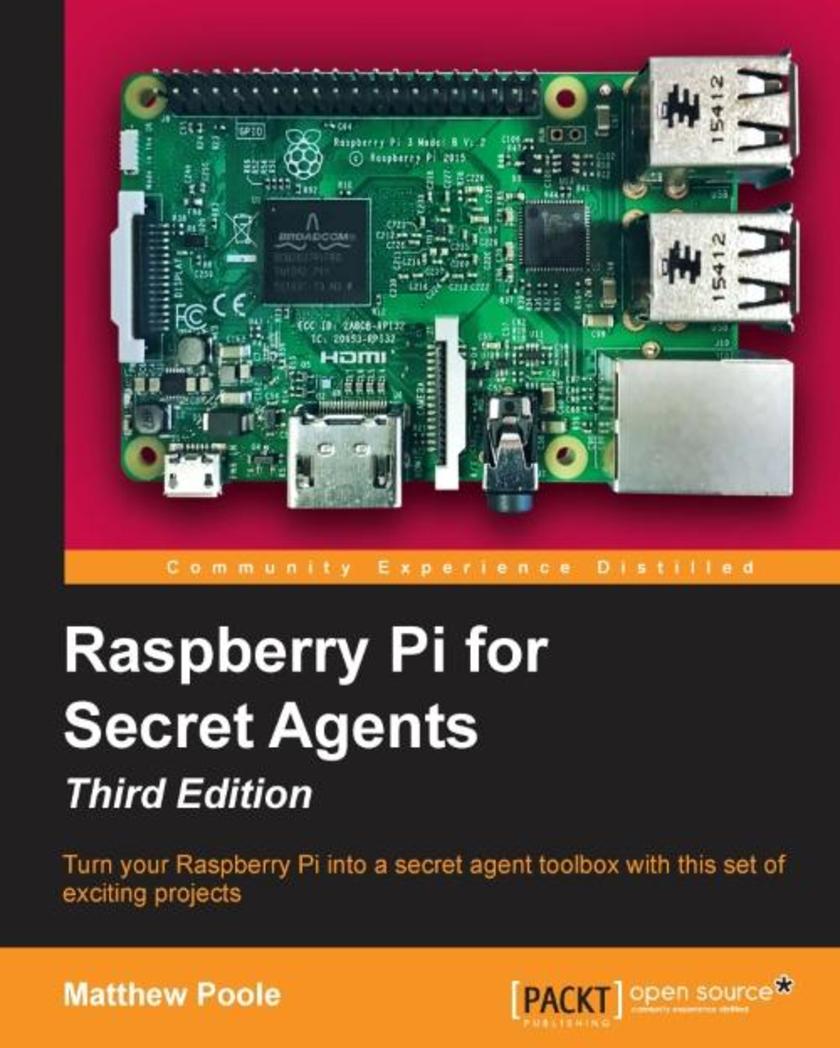
Raspberry Pi for Secret Agents - Third Edition
¥63.21
Turn your Raspberry Pi into a secret agent toolbox with this set of exciting projects About This Book Turn your Raspberry Pi into a multi-purpose secret agent gadget for audio and video surveillance, Wi-Fi exploration, or playing pranks on your friends Detect an intruder on camera or with sensors and set off an alarm or receive messages to your phone Find out what the other computers on your network are up to and make yourself anonymous on the Internet This book has been updated for new additions to your toolkit featuring the tiny, recently released Raspberry Pi Zero board Who This Book Is For This book is for those who are new to the Raspberry Pi Zero ,Raspberry Pi 2 or Raspberry Pi 3 and have some experience with the original Raspberry Pi models, and even for those budding secret agents who would like to use Pi Zero as a secret agent toolbox. No programming experience is assumed. Suitable for the novice and expert alike, each topic provides a fast and easy way to get started with exciting applications, with practical examples in every chapter. What You Will Learn Install and configure the Raspbian Jessie operating system for maximum mischief Detect an intruder with motion detection or a laser trip wire and set off an alarm Listen in to conversations from a distance over Bluetooth Distort your voice in weird and wonderful ways Track the Pi's whereabouts using GPS Connect your Pi to the mobile Internet using a 3G dongle and make yourself anonymous on the net Display secret messages and codes to fellow agents on a LED display In Detail This book is for all mischievous Raspberry Pi owners who’d like to see their computer transform into a neat spy gadget to be used in a series of practical pranks and projects. No previous skills are required to follow along, and if you’re completely new to Linux, you’ll pick up much of the basics for free. We’ll help you set up your Raspberry Pi Zero , Raspberry Pi 2 and Raspberry Pi 3 and guide you through a number of pranks and secret agent techniques that are so inconspicuous yet high on mischief. You’ll learn how to configure your operating system for maximum mischief and start exploring audio, video, or Wi-Fi techniques. We’ll show you how to record, listen, or talk to people from a distance and how to set up your own phone network. Then, you’ll plug in your webcam and set up a motion detector with an alarm and find out what the other computers on your Wi-Fi network are up to. Once you've mastered the techniques, we’ll combine them with a battery pack and GPS for the ultimate off-road spy kit. Style and Approach This easy-to-follow guide is for budding secret agents who want to create tools for mischief, stealth, and reconnaissance. It’s full of fun, practical examples and easy-to-follow recipes, guaranteeing maximum mischief for all skill levels.
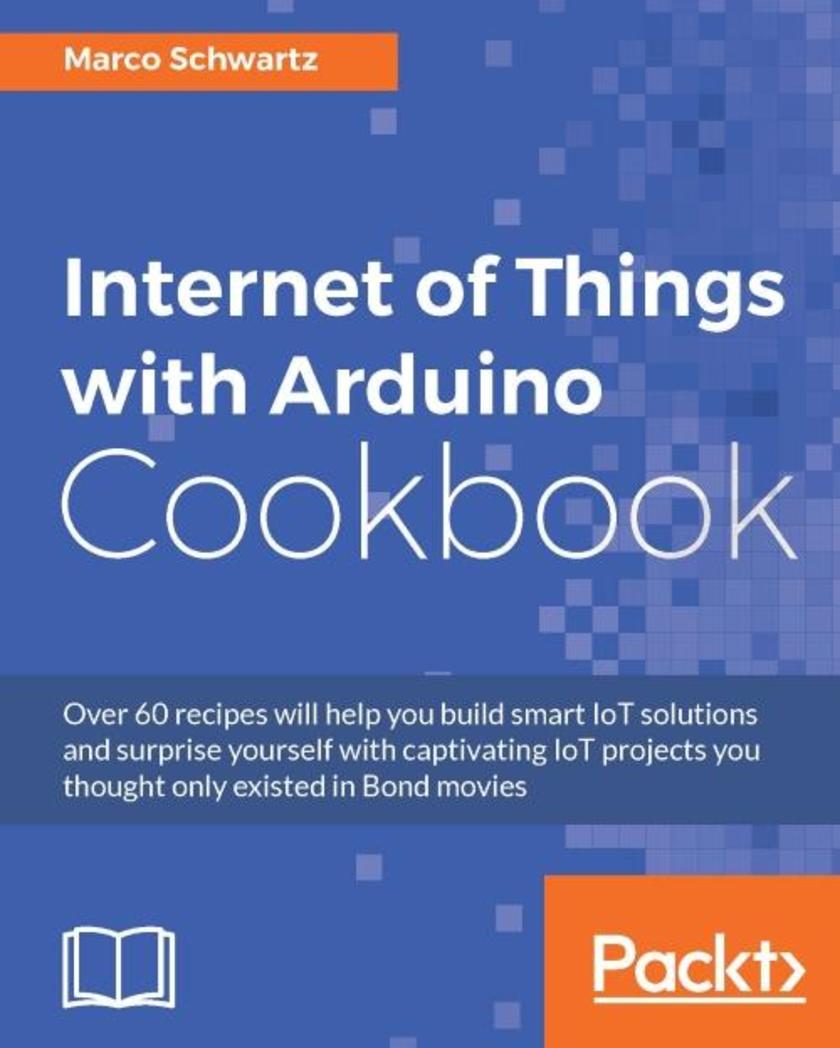
Internet of Things with Arduino Cookbook
¥63.21
Over 60 recipes will help you build smart IoT solutions and surprise yourself with captivating IoT projects you thought only existed in Bond movies About This Book This book offers key solutions and advice to address the hiccups faced when working on Arduino-based IoT projects in the real world Take your existing skills and capabilities to the next level by building challenging IoT applications with ease. Be the tech disruptor you always wanted to be with key recipes that help you solve Arduino IoT related problems smarter and faster. Put IoT to work through recipes on building Arduino-based devices that take control of your home, health, and life! Who This Book Is For This book is primarily for tech enthusiasts and early IoT adopters who would like to make the most of IoT and address the challenges encountered while developing IoT-based applications with Arduino. This book is also good for developers with basic electronics knowledge who need help to successfully build Arduino projects. What You Will Learn Monitor several Arduino boards simultaneously Tweet sensor data directly from your Arduino board Post updates on your Facebook wall directly from your Arduino board Create an automated access control with a fingerprint sensor Control your entire home from a single dashboard Make a GPS tracker that you can track in Google Maps Build a live camera that streams directly from your robot In Detail Arduino is a powerful and very versatile platform used by millions of people around the world to create DIY electronics projects. It can be connected to a wide variety of sensors and other components, making it the ideal platform to build amazing Internet of Things (IoT) projects on—the next wave in the era of computing. This book takes a recipe-based approach, giving you precise examples on how to build IoT projects of all types using the Arduino platform. You will come across projects from several fields, including the popular robotics and home automation domains. Along with being introduced to several forms of interactions within IoT, including projects that directly interact with well-known web services such as Twitter, Facebook, and Dropbox we will also focus on Machine-to-Machine (M2M) interactions, where Arduino projects interact without any human intervention. You will learn to build a few quick and easy-to-make fun projects that will really expand your horizons in the world of IoT and Arduino. Each chapter ends with a troubleshooting recipe that will help you overcome any problems faced while building these projects. By the end of this book, you will not only know how to build these projects, but also have the skills necessary to build your own IoT projects in the future. Style and approach This book takes a recipe-based approach, giving you precise examples on how to build IoT projects using the Arduino platform. You will learn to build fun and easy projects through a task-oriented approach.
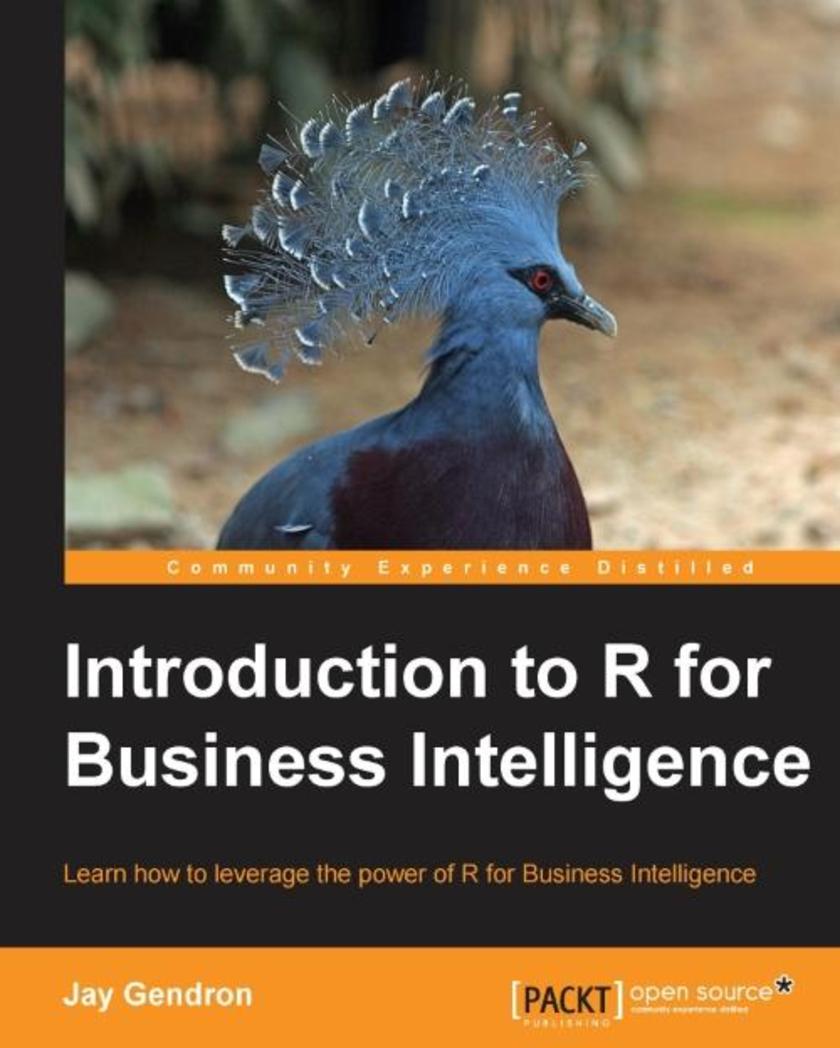
Introduction to R for Business Intelligence
¥63.21
Learn how to leverage the power of R for Business Intelligence About This Book Use this easy-to-follow guide to leverage the power of R analytics and make your business data more insightful. This highly practical guide teaches you how to develop dashboards that help you make informed decisions using R. Learn the A to Z of working with data for Business Intelligence with the help of this comprehensive guide. Who This Book Is For This book is for data analysts, business analysts, data science professionals or anyone who wants to learn analytic approaches to business problems. Basic familiarity with R is expected. What You Will Learn Extract, clean, and transform data Validate the quality of the data and variables in datasets Learn exploratory data analysis Build regression models Implement popular data-mining algorithms Visualize results using popular graphs Publish the results as a dashboard through Interactive Web Application frameworks In Detail Explore the world of Business Intelligence through the eyes of an analyst working in a successful and growing company. Learn R through use cases supporting different functions within that company. This book provides data-driven and analytically focused approaches to help you answer questions in operations, marketing, and finance. In Part 1, you will learn about extracting data from different sources, cleaning that data, and exploring its structure. In Part 2, you will explore predictive models and cluster analysis for Business Intelligence and analyze financial times series. Finally, in Part 3, you will learn to communicate results with sharp visualizations and interactive, web-based dashboards. After completing the use cases, you will be able to work with business data in the R programming environment and realize how data science helps make informed decisions and develops business strategy. Along the way, you will find helpful tips about R and Business Intelligence. Style and approach This book will take a step-by-step approach and instruct you in how you can achieve Business Intelligence from scratch using R. We will start with extracting data and then move towards exploring, analyzing, and visualizing it. Eventually, you will learn how to create insightful dashboards that help you make informed decisions—and all of this with the help of real-life examples.
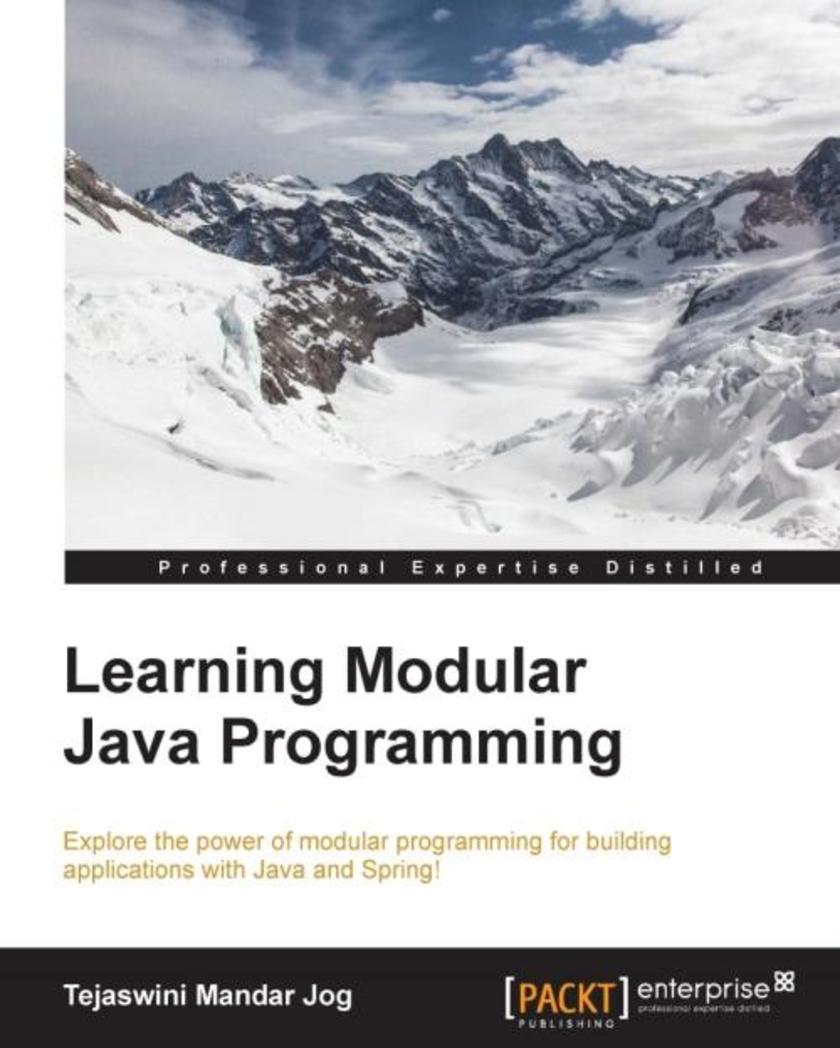
Learning Modular Java Programming
¥63.21
Explore the power of modular programming for building applications with Java and Spring! About This Book Understand the basic concepts of Modular Programming to build enterprise applications with Java Create short and precise code and eliminate recursion The book follows a step-by-step approach that makes implementing Modular Programming easy Who This Book Is For This book targets Java developers who have a basic knowledge of application development with Java and are interested in learning the Modular Programming approach for building reusable applications that are easy to test, and thus improve overall project management. What You Will Learn Learn about Modular Programming and what modules an enterprise application can be divided into. Set up a development environment and create a "Hello World" application. Start implementing a sample application from the presentation layer. Implement the persistence layer. Implement the business layer, wrapping up all of the modules with Contexts and Dependency Injection (CDI). Manage an application's life cycle. Learn how to secure Web applications. Test enterprise applications and their automation. Understand how to version source code using Source Code Management (SCM) systems such as GIT and SVN. In Detail Modular programming means dividing an application into small parts and then developing it. It is an approach taken by developers to build applications and helps them add efficiency in their development process, thus making it more effective. The book starts with the fundamentals of Modular Programming. Then we move on to the actual implementation, where we teach developers how to divide an application into different modules or layers (such as presentation, execution, security, lifecycle, services, and so on) for better management. Once readers are well-versed in these modules and their development, the book shows how to create bindings in order to join these different modules and form a complete application. Next, the readers will learn how to manage these modules through dependency injection. Later, we move on to testing; readers will learn how to test the different modules of an application. The book ends by teaching readers how to maintain different versions of their application and how to modify it. By the end of the book, readers will have a good understanding of modular programming and will be able to use it to build applications with Java. Style and approach This book is a practical guide to help readers learn Modular Programming with Java and build an enterprise-ready app along the way. The book is divided into three major sections. The first teaches the fundamentals of Modular Programming and how to implement them; the second teaches readers to combine and manage the modules developed; in the final section, the book explains the applications of Modular Programming.
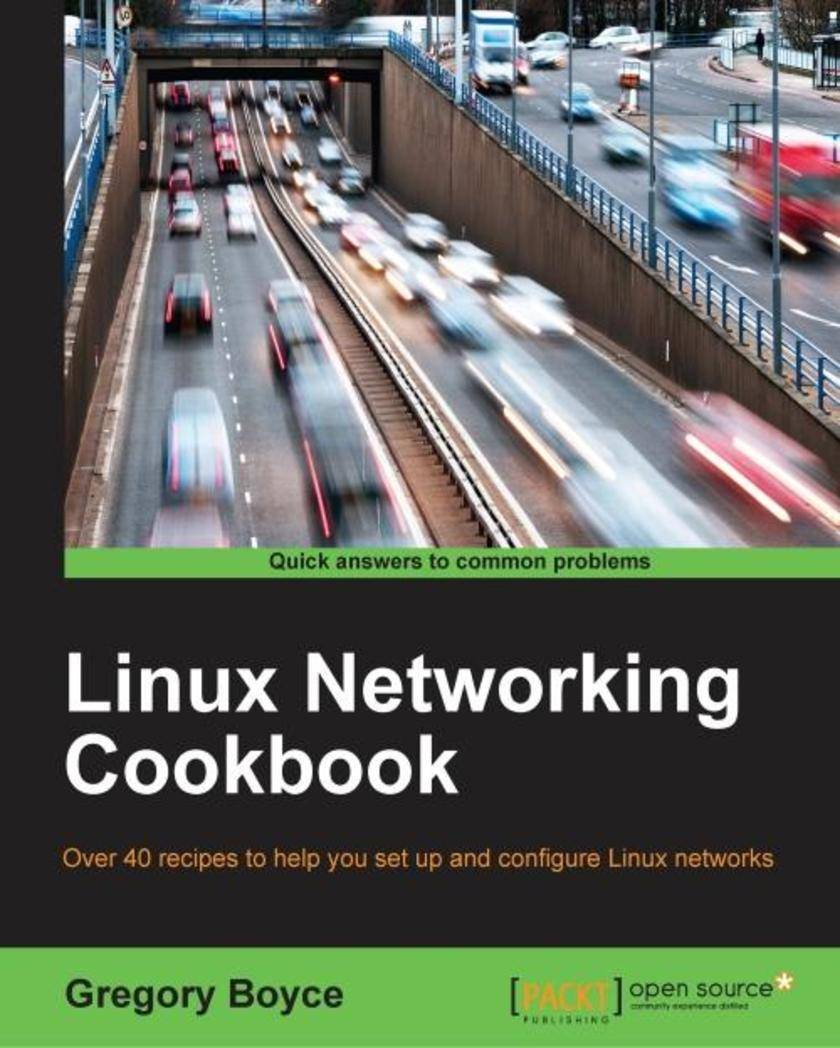
Linux Networking Cookbook
¥63.21
Over 40 recipes to help you set up and configure Linux networks About This Book Move beyond the basics of how a Linux machine works and gain a better understanding of Linux networks and their configuration Impress your peers by setting up and configuring a Linux server and its various network elements like a pro This is a hands-on solution guide to building, maintaining, and securing a network using Linux Who This Book Is For This book is targeted at Linux systems administrators who have a good basic understanding and some prior experience of how a Linux machine operates, but want to better understand how various network services function, how to set them up, and how to secure them. You should be familiar with how to set up a Linux server and how to install additional software on them. What You Will Learn Route an IPv6 netblock to your local network Modify your named instance to support setting hostnames for your IPv6 addresses Use SSH for remote console access Configure NGINX with TLS Secure XMPP with TLS Leverage iptables6 to firewall your IPv6 traffic Configure Samba as an Active Directory compatible directory service In Detail Linux can be configured as a networked workstation, a DNS server, a mail server, a firewall, a gateway router, and many other things. These are all part of administration tasks, hence network administration is one of the main tasks of Linux system administration. By knowing how to configure system network interfaces in a reliable and optimal manner, Linux administrators can deploy and configure several network services including file, web, mail, and servers while working in large enterprise environments. Starting with a simple Linux router that passes traffic between two private networks, you will see how to enable NAT on the router in order to allow Internet access from the network, and will also enable DHCP on the network to ease configuration of client systems. You will then move on to configuring your own DNS server on your local network using bind9 and tying it into your DHCP server to allow automatic configuration of local hostnames. You will then future enable your network by setting up IPv6 via tunnel providers. Moving on, we’ll configure Samba to centralize authentication for your network services; we will also configure Linux client to leverage it for authentication, and set up a RADIUS server that uses the directory server for authentication. Toward the end, you will have a network with a number of services running on it, and will implement monitoring in order to detect problems as they occur. Style and approach This book is packed with practical recipes and a task-based approach that will walk you through building, maintaining, and securing a computer network using Linux.
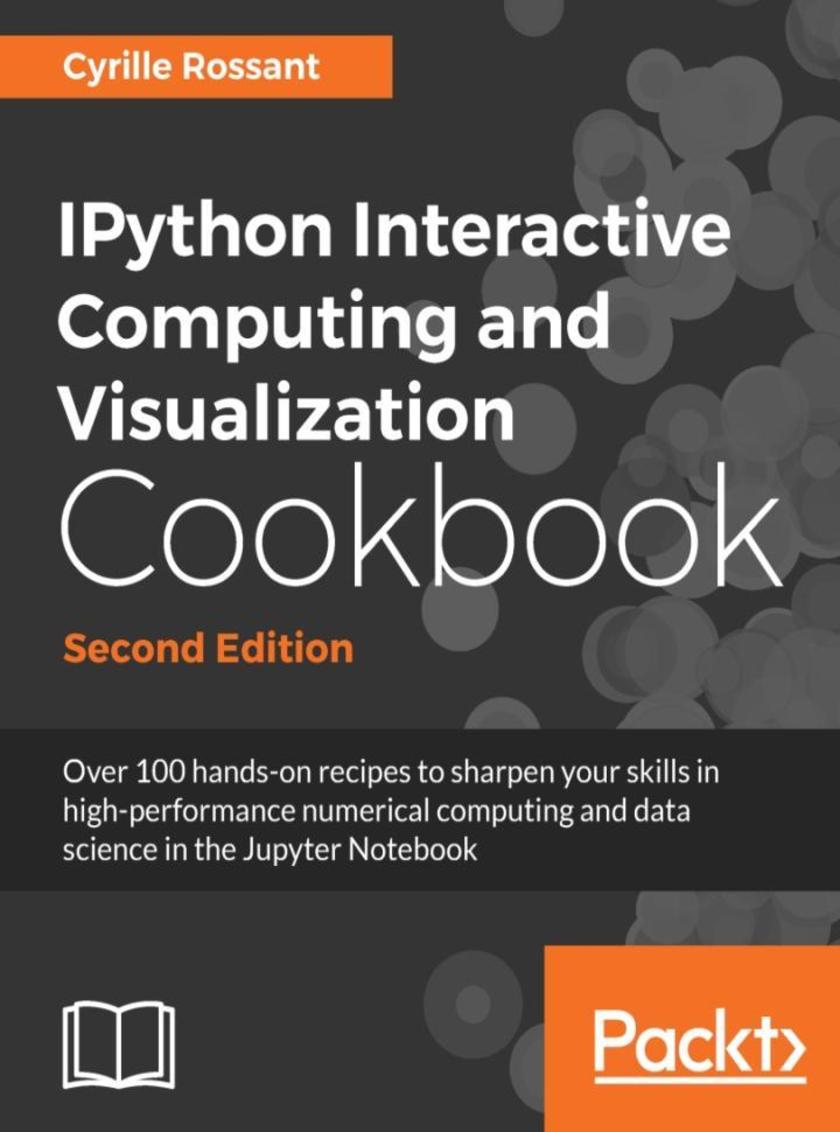
IPython Interactive Computing and Visualization Cookbook - Second Edition
¥63.21
Learn to use IPython and Jupyter Notebook for your data analysis and visualization work. About This Book ? Leverage the Jupyter Notebook for interactive data science and visualization ? Become an expert in high-performance computing and visualization for data analysis and scientific modeling ? A comprehensive coverage of scientific computing through many hands-on, example-driven recipes with detailed, step-by-step explanations Who This Book Is For This book is intended for anyone interested in numerical computing and data science: students, researchers, teachers, engineers, analysts, and hobbyists. A basic knowledge of Python/NumPy is recommended. Some skills in mathematics will help you understand the theory behind the computational methods. What You Will Learn ? Master all features of the Jupyter Notebook ? Code better: write high-quality, readable, and well-tested programs; profile and optimize your code; and conduct reproducible interactive computing experiments ? Visualize data and create interactive plots in the Jupyter Notebook ? Write blazingly fast Python programs with NumPy, ctypes, Numba, Cython, OpenMP, GPU programming (CUDA), parallel IPython, Dask, and more ? Analyze data with Bayesian or frequentist statistics (Pandas, PyMC, and R), and learn from actual data through machine learning (scikit-learn) ? Gain valuable insights into signals, images, and sounds with SciPy, scikit-image, and OpenCV ? Simulate deterministic and stochastic dynamical systems in Python ? Familiarize yourself with math in Python using SymPy and Sage: algebra, analysis, logic, graphs, geometry, and probability theory In Detail Python is one of the leading open source platforms for data science and numerical computing. IPython and the associated Jupyter Notebook offer efficient interfaces to Python for data analysis and interactive visualization, and they constitute an ideal gateway to the platform. IPython Interactive Computing and Visualization Cookbook, Second Edition contains many ready-to-use, focused recipes for high-performance scientific computing and data analysis, from the latest IPython/Jupyter features to the most advanced tricks, to help you write better and faster code. You will apply these state-of-the-art methods to various real-world examples, illustrating topics in applied mathematics, scientific modeling, and machine learning. The first part of the book covers programming techniques: code quality and reproducibility, code optimization, high-performance computing through just-in-time compilation, parallel computing, and graphics card programming. The second part tackles data science, statistics, machine learning, signal and image processing, dynamical systems, and pure and applied mathematics. Style and approach IPython Interactive Computing and Visualization Cookbook, Second Edition is a practical, hands-on book that will teach you how to analyze and visualize all kinds of data in the Jupyter Notebook.
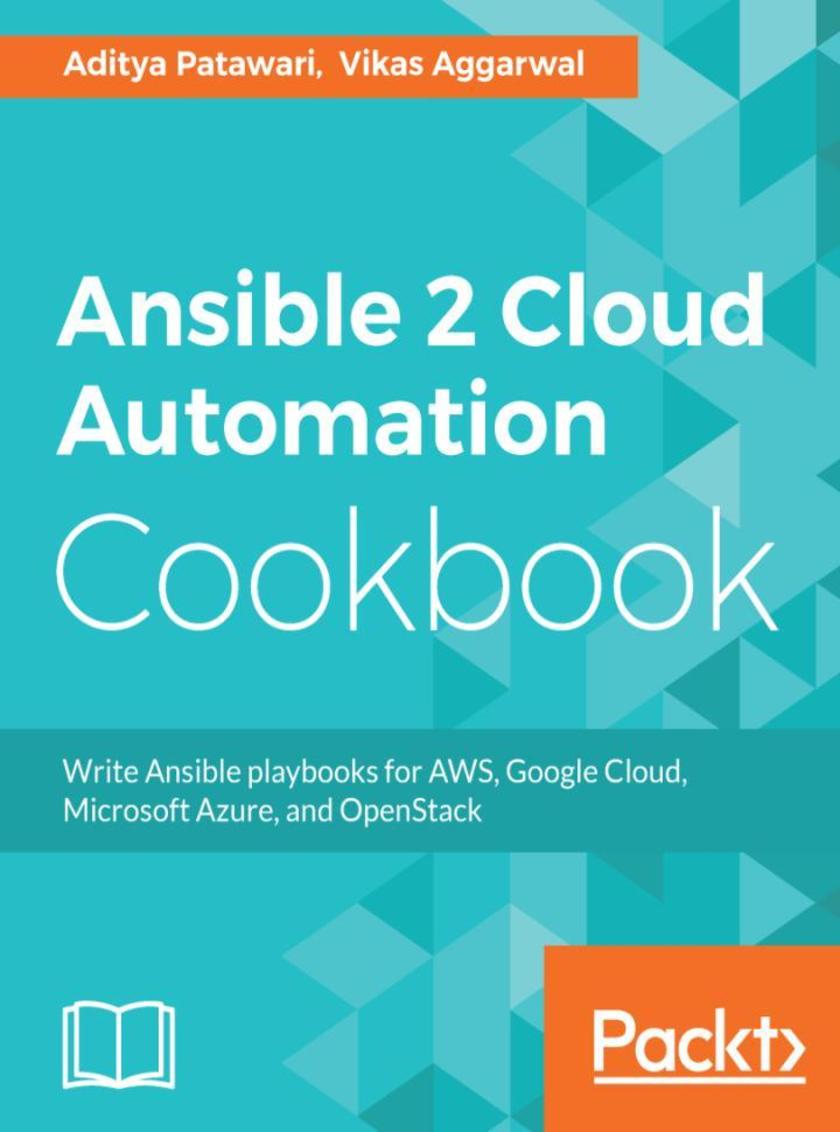
Ansible 2 Cloud Automation Cookbook
¥63.21
Orchestrate your cloud infrastructure About This Book ? Recipe-based approach to install and configure cloud resources using Ansible ? Covers various cloud-related modules and their functionalities ? Includes deployment of a sample application to the cloud resources that we create ? Learn the best possible way to manage and automate your cloud infrastructure Who This Book Is For If you are a system administrator, infrastructure engineer, or a DevOps engineer who wants to obtain practical knowledge about Ansible and its cloud deliverables, then this book is for you. Recipes in this book are designed for people who would like to manage their cloud infrastructures efficiently using Ansible, which is regarded as one of the best tools for cloud management and automation. What You Will Learn ? Use Ansible Vault to protect secrets ? Understand how Ansible modules interact with cloud providers to manage resources ? Build cloud-based resources for your application ? Create resources beyond simple virtual machines ? Write tasks that can be reused to create resources multiple times ? Work with self-hosted clouds such as OpenStack and Docker ? Deploy a multi-tier application on various cloud providers In Detail Ansible has a large collection of inbuilt modules to manage various cloud resources. The book begins with the concepts needed to safeguard your credentials and explain how you interact with cloud providers to manage resources. Each chapter begins with an introduction and prerequisites to use the right modules to manage a given cloud provider. Learn about Amazon Web Services, Google Cloud, Microsoft Azure, and other providers. Each chapter shows you how to create basic computing resources, which you can then use to deploy an application. Finally, you will be able to deploy a sample application to demonstrate various usage patterns and utilities of resources. Style and approach This book will help readers get started with Ansible cloud modules. It has code snippets and diagrams along with real world examples that will help you move ahead easily. Using real world scenarios, you will learn to deploy an application to cloud resources.
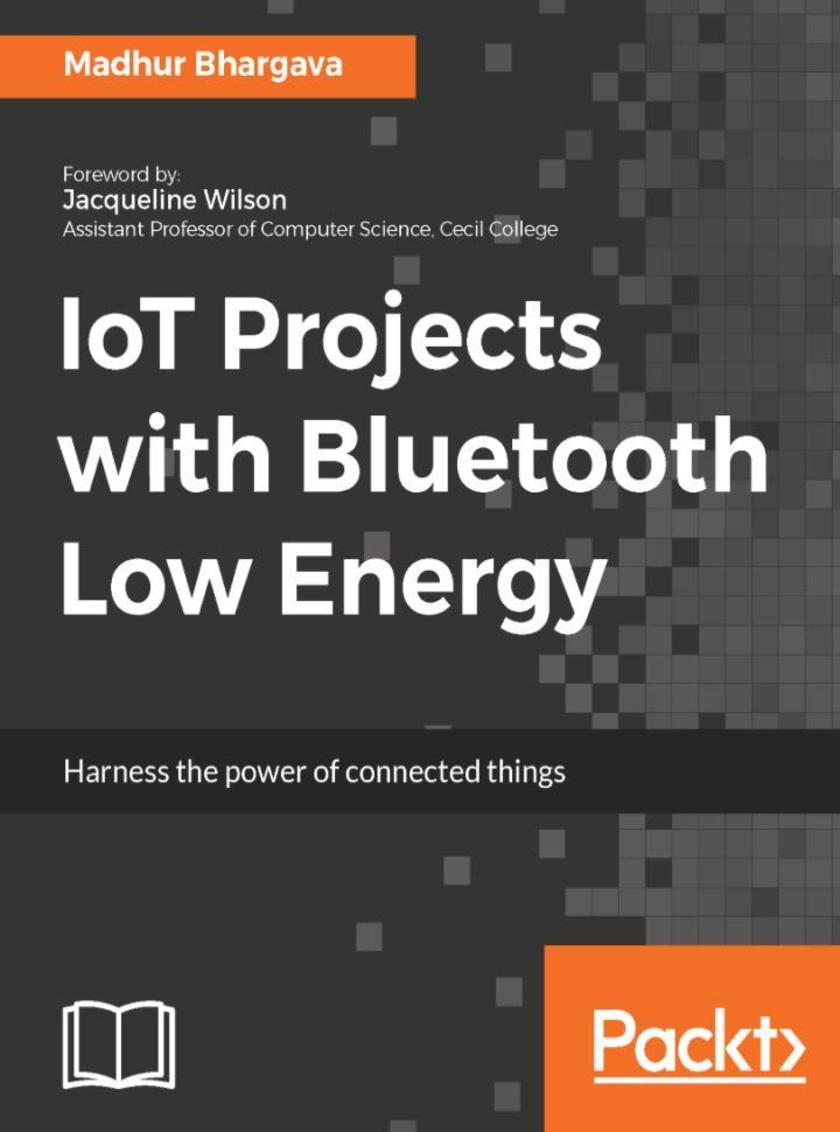
IoT Projects with Bluetooth Low Energy
¥63.21
Use the power of BLE to create exciting IoT applications About This Book ? Build hands-on IoT projects using Bluetooth Low Energy and learn about Bluetooth 5 and its features. ? Build a health tracking system, and indoor navigation and warehouse weather monitoring projects using smart devices. ? Build on a theoretical foundation and create a practice-based understanding of Bluetooth Low Energy. Who This Book Is For If you're an application developer, a hardware enthusiast, or just curious about the Internet of Things and how to convert it into hands-on projects, then this book is for you. Having some knowledge of writing mobile applications will be advantageous. What You Will Learn ? Learn about the architecture and IoT uses of BLE, and in which domains it is being used the most ? Set up and learn about various development platforms (Android, iOS, Firebase, Raspberry Pi, Beacons, and GitHub) ? Create an Explorer App (Android/iOS) to diagnose a Fitness Tracker ? Design a Beacon with the Raspberry Pi and write an app to detect the Beacon ? Write a mobile app to periodically poll the BLE tracking sensor ? Compose an app to read data periodically from temperature and humidity sensors ? Explore more applications of BLE with IoT ? Design projects for both Android and iOS mobile platforms In Detail Bluetooth Low Energy, or Bluetooth Smart, is Wireless Personal Area networking aimed at smart devices and IoT applications. BLE has been increasingly adopted by application developers and IoT enthusiasts to establish connections between smart devices. This book initially covers all the required aspects of BLE, before you start working on IoT projects. In the initial stages of the book, you will learn about the basic aspects of Bluetooth Low Energy—such as discovering devices, services, and characteristics—that will be helpful for advanced-level projects. This book will guide you through building hands-on projects using BLE and IoT. These projects include tracking health data, using a mobile App, and making this data available for health practitioners; Indoor navigation; creating beacons using the Raspberry Pi; and warehouse weather Monitoring. This book also covers aspects of Bluetooth 5 (the latest release) and its effect on each of these projects. By the end of this book, you will have hands-on experience of using Bluetooth Low Energy to integrate with smart devices and IoT projects. Style and approach A practical guide that will help you promote yourself into an expert by building and exploring practical applications of Bluetooth Low Energy.
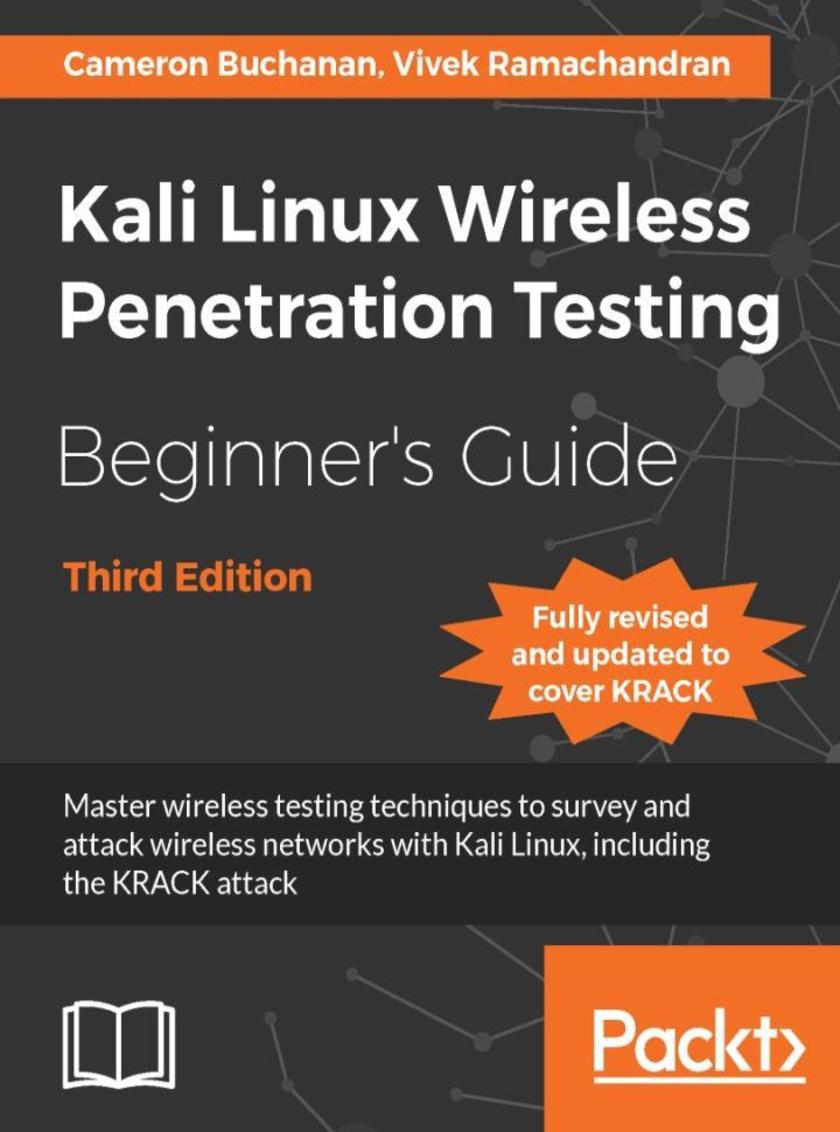
Kali Linux Wireless Penetration Testing Beginner's Guide - Third Edition
¥63.21
Kali Linux Wireless Penetration Testing Beginner's Guide, Third Edition presents wireless pentesting from the ground up, and has been updated with the latest methodologies, including full coverage of the KRACK attack. About This Book ? Learn wireless penetration testing with Kali Linux ? Detect hidden wireless networks and discover their names ? Explore advanced Wi-Fi hacking techniques including rogue access point hosting and probe sniffing ? Develop your encryption cracking skills and gain an insight into the methods used by attackers and the underlying technologies that facilitate these attacks Who This Book Is For Kali Linux Wireless Penetration Testing Beginner's Guide, Third Edition is suitable for anyone who wants to learn more about pentesting and how to understand and defend against the latest wireless network attacks. What You Will Learn ? Understand the KRACK attack in full detail ? Create a wireless lab for your experiments ? Sniff out wireless packets, hidden networks, and SSIDs ? Capture and crack WPA-2 keys ? Sniff probe requests and track users through their SSID history ? Attack radius authentication systems ? Sniff wireless traffic and collect interesting data ? Decrypt encrypted traffic with stolen keys In Detail As wireless networks become ubiquitous in our lives, wireless penetration testing has become a key skill in the repertoire of the professional penetration tester. This has been highlighted again recently with the discovery of the KRACK attack which enables attackers to potentially break into Wi-Fi networks encrypted with WPA2. The Kali Linux security distribution comes with a myriad of tools used for networking attacks and detecting security loopholes. Kali Linux Wireless Penetration Testing Beginner's Guide, Third Edition has been updated to Kali Linux 2017.3 with the latest methodologies, including full coverage of the KRACK attack and how to defend against it. The book presents wireless pentesting from the ground up, introducing all elements of penetration testing with each new technology. You'll learn various wireless testing methodologies by example, from the basics of wireless routing and encryption through to detailed coverage of hacking methods and attacks such as the Hirte and Caffe Latte. Style and approach Kali Linux Wireless Penetration Testing Beginner's Guide, Third Edition is a practical, hands-on guide to modern wi-fi network hacking. It covers both the theory and practice of wireless pentesting, offering detailed, real-world coverage of the latest vulnerabilities and attacks.
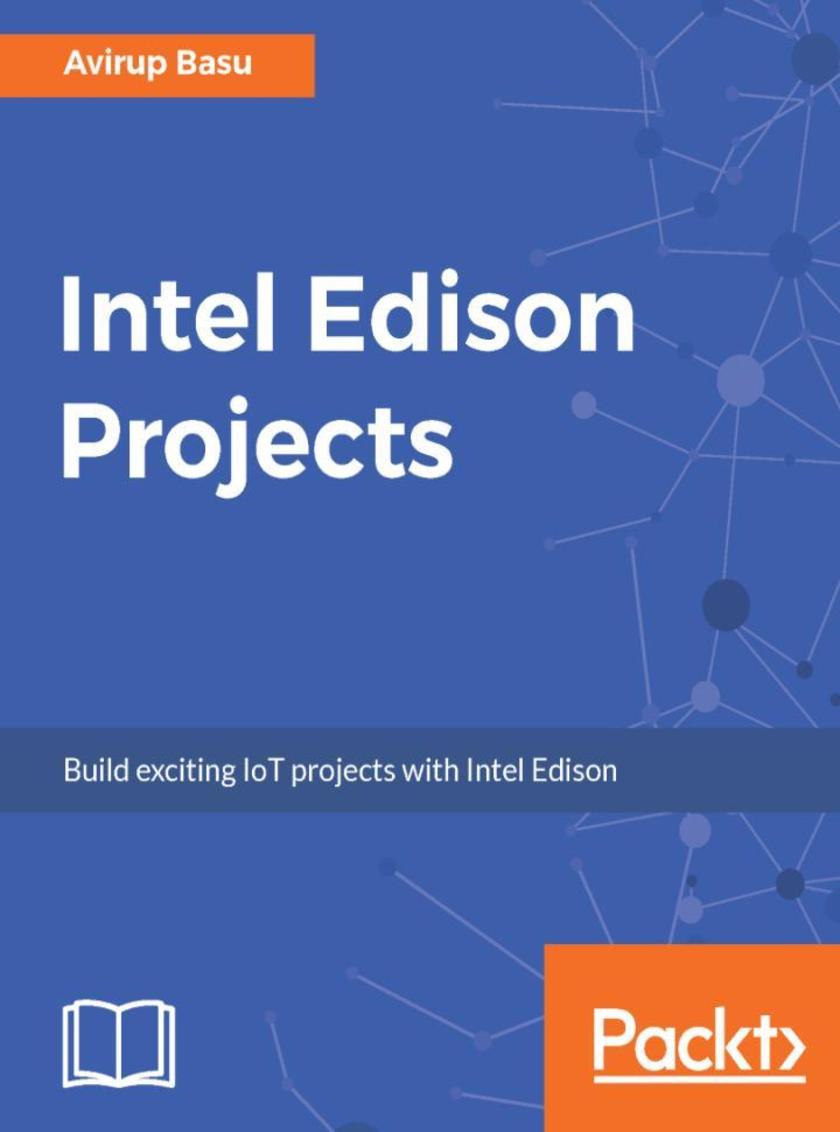
Intel Edison Projects
¥63.21
Build powerful Robots and IoT solutions using Intel Edison About This Book ? Learn to build advanced level robots with Intel Edison and Arduino ? Efficiently build and program home automation and IoT projects with Intel Edison ? Master the skills of creating enticing projects with Intel Edison. Who This Book Is For If you are a hobbyist, robot engineer, IoT enthusiast, programmer, or developer who wants to create autonomous projects with Intel Edison, then this book is for you. Prior programming knowledge would be beneficial. What You Will Learn ? Program your device using the Arduino processor language, Python, and Node.js ? Interface different sensors with the Intel Edison ? Build a home automation system using MQTT, Android, and WPF ? Perform face detection using Intel Edison ? Develop a high-speed line follower robot ? Control a robot using a PC application and an custom controller In Detail Change the way you look at embedded electronics with Intel Edison. It is a small computing platform packed with a set of robust features to deliver hands-on performance, durability, and software support. This book is a perfect place to kickstart development and rapid prototyping using Intel Edison. It will start by introducing readers to the Intel Edison board and explaining how to get started with it. You will learn how to build a mini weather station, which will help you to acquire temperature and smoke level and push it to the IoT platform. Then you will see how to build a home automation device and control your appliances using an Android app. Furthermore, we will build a security system using a webcam to detect faces and perform voice recognition. Toward the end, the book will demonstrate how you can build two robots, which will be based on different line sensing sensors and can be controlled by a PC. The book will guide the readers through each and every step of execution of a project, using Intel Edison. Style and approach A project-based guide that will take the readers through various domains of projects like robotics, IoT and so on.
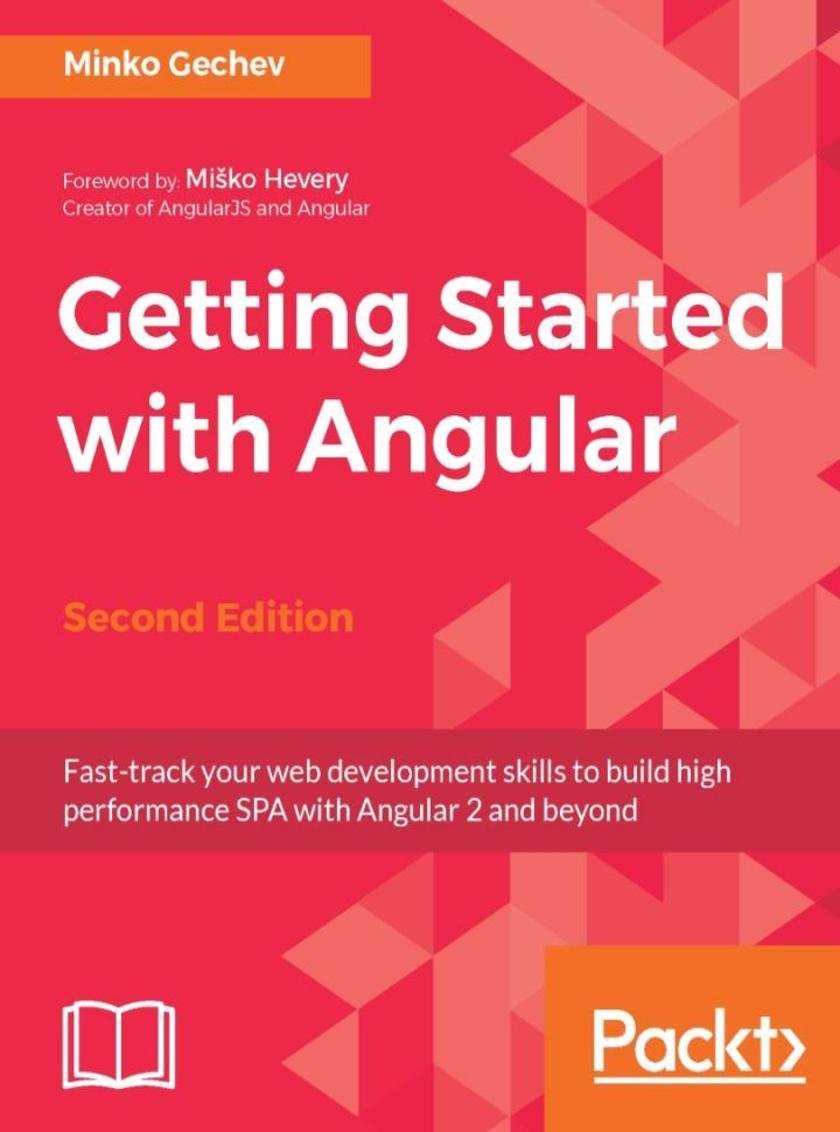
Getting Started with Angular - Second Edition
¥63.21
Fast-track your web development skills to build high performance SPA with Angular 2 and beyond About This Book Up to date with the latest API changes introduced by Angular 2 and 4 Get familiar with the improvements to directives, change detection, dependency injection, router, and more Understand Angular's new component-based architecture Start using TypeScript to supercharge your Angular applications Who This Book Is For Do you want to jump in at the deep end of AngularOr perhaps you’re interested assessing the changes to AngularJS before moving overIf so, then "Getting Started with Angular" is the book for you. To get the most out of the book, you’ll need to be familiar with AngularJS 1.x, and have a good understanding of JavaScript. What You Will Learn Understand the changes made from AngularJS with side-by-side code samples to help demystify the Angular learning curve Start working with Angular’s new method of implementing directives Use TypeScript to write modern, powerful Angular applications Dig in to the change detection method, and other architectural changes to make sure you know what’s going on under the hood of Angular Get to work with the new router in Angular Use the new features of Angular, including pipes, and the updated features such as forms, services, and dependency injection Learn about the server-side rendering in Angular to keep your new applications SEO-friendly Enhance your applications using Ahead-of-Time compilation and Web Workers In Detail I'm delighted to see this new update and hope it helps you build amazing things with Angular. - Mi?ko Hevery, Creator of AngularJS and Angular Angular is the modern framework you need to build performant and robust web applications. This book is the quickest way to upgrade your AngularJS knowledge to the brave new world of Angular, and get grips with the framework. It starts with an overview putting the changes of the framework in context with version 1. After that, you will be taken on a TypeScript crash-course so you can take advantage of Angular in its native, statically-typed environment. You'll explore the new change detection mechanism in detail, how directives and components have changed, how you create applications with Angular, and much more. Next, you'll understand how to efficienly develop forms, use the router, implement communication with HTTP services, and transform data with custom pipes. Finally, we will take a look at the Angular's Ahead-of-Time compiler, angular-cli and other such tools that help us build professional applications. By the end of the book, you’ll be ready to start building quick and efficient Angular applications compatible with v2 and v4, that take advantage of all the new features on offer. This book is up to date for the 2.4 release and is compatible with the 4.0 release as well. Style and approach Starting with a comparison between Angular versions, this book is filled with side-by-side code examples to help highlight the changes. Each chapter then looks at major changes to the framework and is filled with small examples and sample code to get you started.
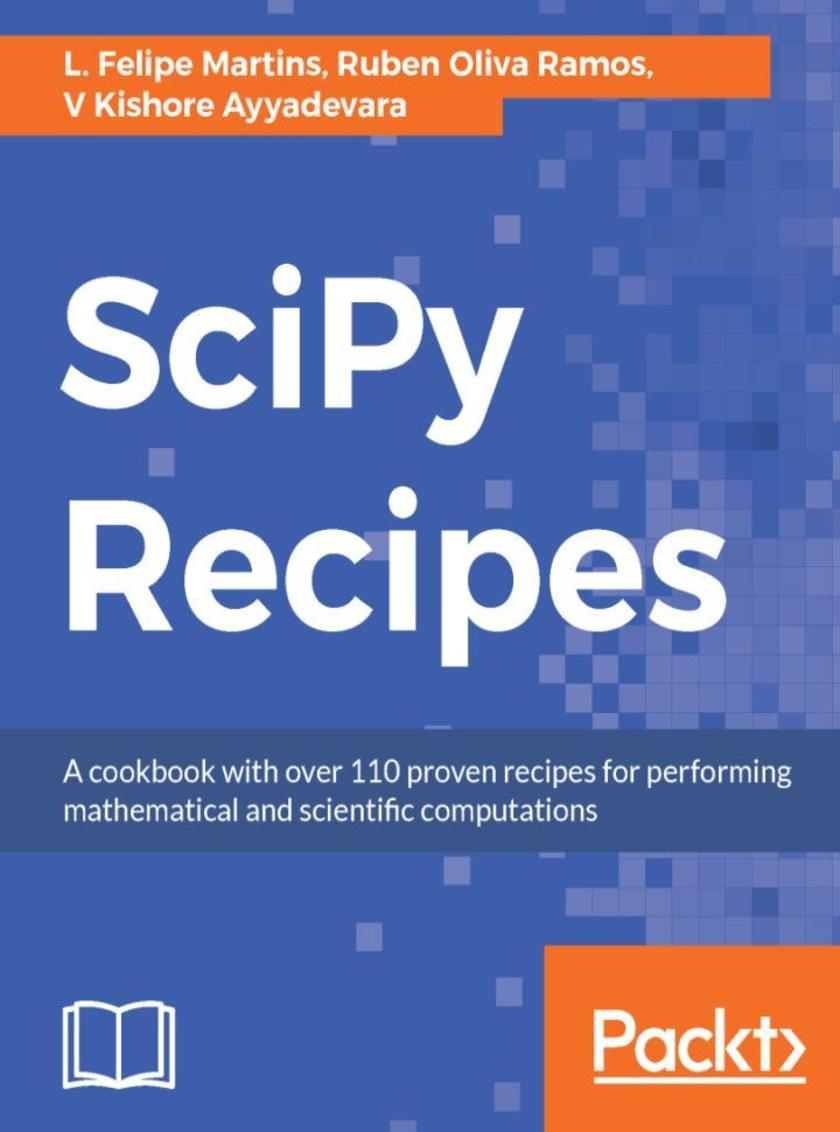
SciPy Recipes
¥63.21
Tackle the most sophisticated problems associated with scientific computing and data manipulation using SciPy About This Book ? Covers a wide range of data science tasks using SciPy, NumPy, pandas, and matplotlib ? Effective recipes on advanced scientific computations, statistics, data wrangling, data visualization, and more ? A must-have book if you're looking to solve your data-related problems using SciPy, on-the-go Who This Book Is For Python developers, aspiring data scientists, and analysts who want to get started with scientific computing using Python will find this book an indispensable resource. If you want to learn how to manipulate and visualize your data using the SciPy Stack, this book will also help you. A basic understanding of Python programming is all you need to get started. What You Will Learn ? Get a solid foundation in scientific computing using Python ? Master common tasks related to SciPy and associated libraries such as NumPy, pandas, and matplotlib ? Perform mathematical operations such as linear algebra and work with the statistical and probability functions in SciPy ? Master advanced computing such as Discrete Fourier Transform and K-means with the SciPy Stack ? Implement data wrangling tasks efficiently using pandas ? Visualize your data through various graphs and charts using matplotlib In Detail With the SciPy Stack, you get the power to effectively process, manipulate, and visualize your data using the popular Python language. Utilizing SciPy correctly can sometimes be a very tricky proposition. This book provides the right techniques so you can use SciPy to perform different data science tasks with ease. This book includes hands-on recipes for using the different components of the SciPy Stack such as NumPy, SciPy, matplotlib, and pandas, among others. You will use these libraries to solve real-world problems in linear algebra, numerical analysis, data visualization, and much more. The recipes included in the book will ensure you get a practical understanding not only of how a particular feature in SciPy Stack works, but also of its application to real-world problems. The independent nature of the recipes also ensure that you can pick up any one and learn about a particular feature of SciPy without reading through the other recipes, thus making the book a very handy and useful guide. Style and approach This book consists of hands-on recipes where you’ll deal with real-world problems. You’ll execute a series of tasks as you walk through scientific computing challenges using SciPy. Your one-stop solution for common and not-so-common pain points, this is a book that you must have on the shelf.
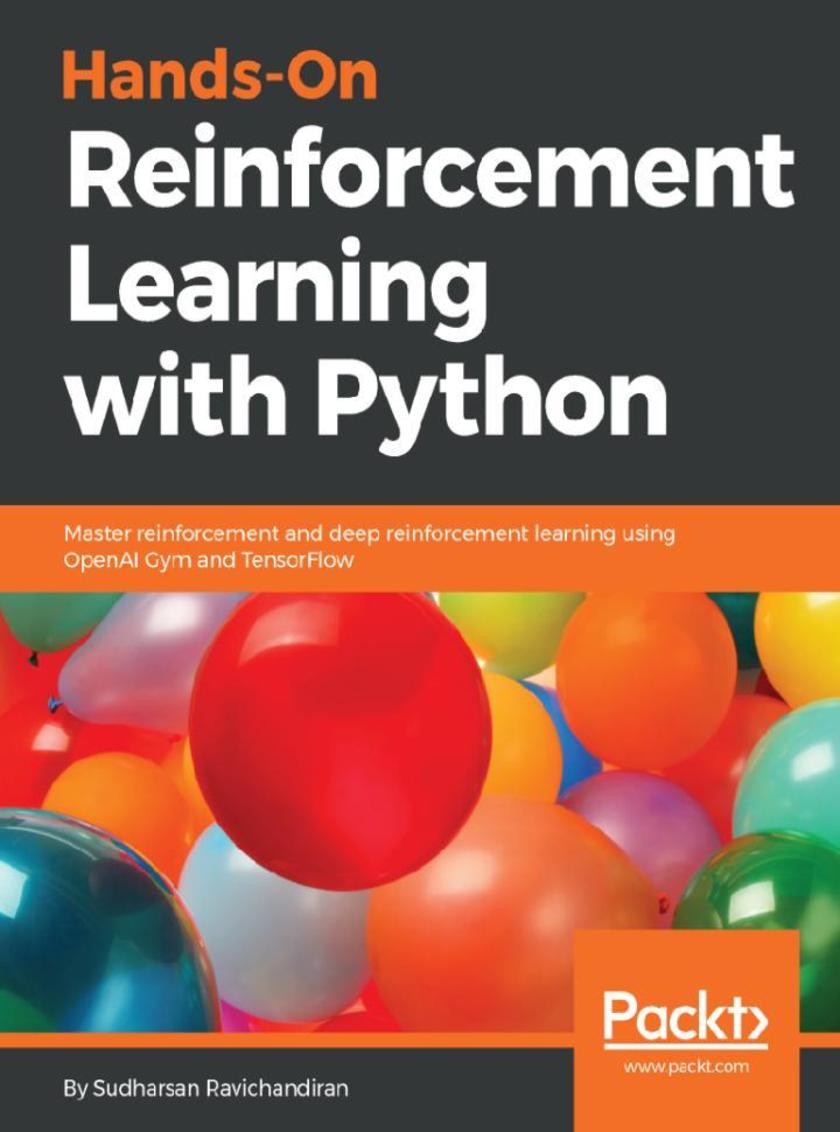
Hands-On Reinforcement Learning with Python
¥63.21
A hands-on guide enriched with examples to master deep reinforcement learning algorithms with Python About This Book ? Your entry point into the world of artificial intelligence using the power of Python ? An example-rich guide to master various RL and DRL algorithms ? Explore various state-of-the-art architectures along with math Who This Book Is For If you’re a machine learning developer or deep learning enthusiast interested in artificial intelligence and want to learn about reinforcement learning from scratch, this book is for you. Some knowledge of linear algebra, calculus, and the Python programming language will help you understand the concepts covered in this book. What You Will Learn ? Understand the basics of reinforcement learning methods, algorithms, and elements ? Train an agent to walk using OpenAI Gym and Tensorflow ? Understand the Markov Decision Process, Bellman’s optimality, and TD learning ? Solve multi-armed-bandit problems using various algorithms ? Master deep learning algorithms, such as RNN, LSTM, and CNN with applications ? Build intelligent agents using the DRQN algorithm to play the Doom game ? Teach agents to play the Lunar Lander game using DDPG ? Train an agent to win a car racing game using dueling DQN In Detail Reinforcement Learning (RL) is the trending and most promising branch of artificial intelligence. Hands-On Reinforcement learning with Python will help you master not only the basic reinforcement learning algorithms but also the advanced deep reinforcement learning algorithms. The book starts with an introduction to Reinforcement Learning followed by OpenAI Gym, and TensorFlow. You will then explore various RL algorithms and concepts, such as Markov Decision Process, Monte Carlo methods, and dynamic programming, including value and policy iteration. This example-rich guide will introduce you to deep reinforcement learning algorithms, such as Dueling DQN, DRQN, A3C, PPO, and TRPO. You will also learn about imagination-augmented agents, learning from human preference, DQfD, HER, and many more of the recent advancements in reinforcement learning. By the end of the book, you will have all the knowledge and experience needed to implement reinforcement learning and deep reinforcement learning in your projects, and you will be all set to enter the world of artificial intelligence. Style and approach This is a hands-on book designed to further expand your machine learning skills by understanding reinforcement to deep reinforcement learning algorithms with applications in Python.
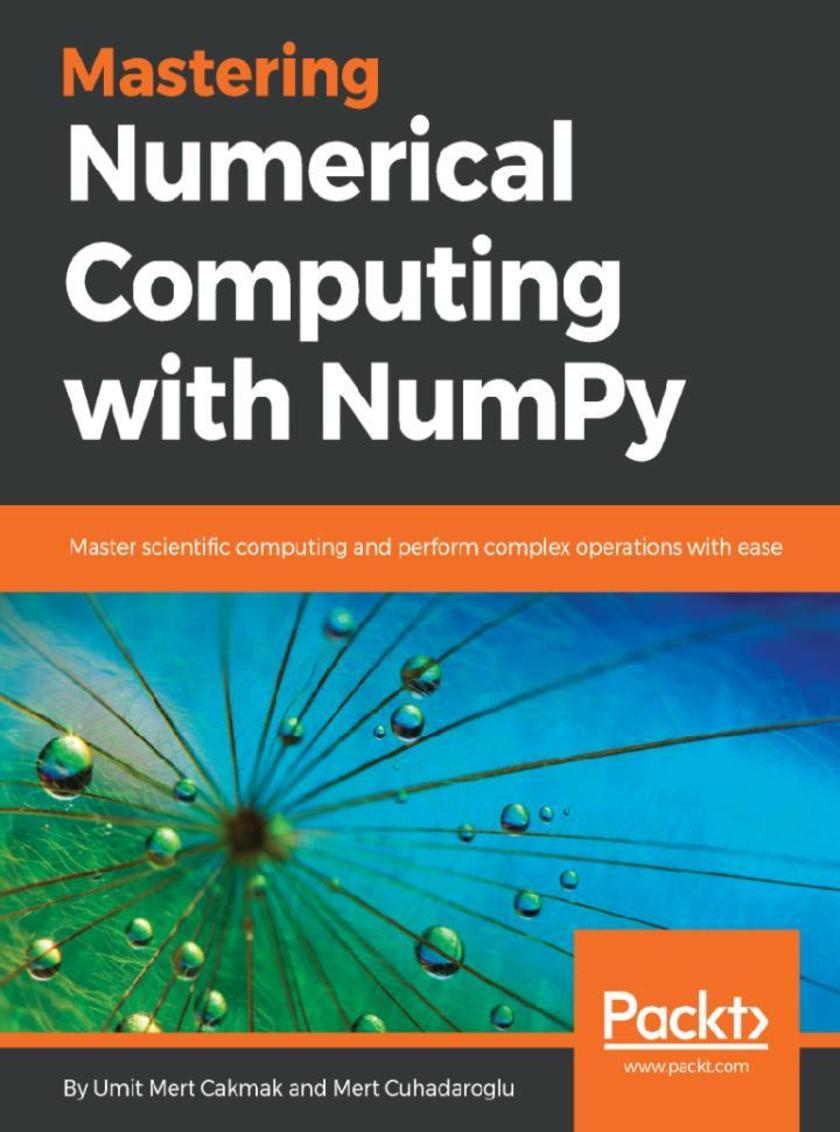
Mastering Numerical Computing with NumPy
¥63.21
Enhance the power of NumPy and start boosting your scientific computing capabilities About This Book ? Grasp all aspects of numerical computing and understand NumPy ? Explore examples to learn exploratory data analysis (EDA), regression, and clustering ? Access NumPy libraries and use performance benchmarking to select the right tool Who This Book Is For Mastering Numerical Computing with NumPy is for you if you are a Python programmer, data analyst, data engineer, or a data science enthusiast, who wants to master the intricacies of NumPy and build solutions for your numeric and scientific computational problems. You are expected to have familiarity with mathematics to get the most out of this book. What You Will Learn ? Perform vector and matrix operations using NumPy ? Perform exploratory data analysis (EDA) on US housing data ? Develop a predictive model using simple and multiple linear regression ? Understand unsupervised learning and clustering algorithms with practical use cases ? Write better NumPy code and implement the algorithms from scratch ? Perform benchmark tests to choose the best configuration for your system In Detail NumPy is one of the most important scientific computing libraries available for Python. Mastering Numerical Computing with NumPy teaches you how to achieve expert level competency to perform complex operations, with in-depth coverage of advanced concepts. Beginning with NumPy's arrays and functions, you will familiarize yourself with linear algebra concepts to perform vector and matrix math operations. You will thoroughly understand and practice data processing, exploratory data analysis (EDA), and predictive modeling. You will then move on to working on practical examples which will teach you how to use NumPy statistics in order to explore US housing data and develop a predictive model using simple and multiple linear regression techniques. Once you have got to grips with the basics, you will explore unsupervised learning and clustering algorithms, followed by understanding how to write better NumPy code while keeping advanced considerations in mind. The book also demonstrates the use of different high-performance numerical computing libraries and their relationship with NumPy. You will study how to benchmark the performance of different configurations and choose the best for your system. By the end of this book, you will have become an expert in handling and performing complex data manipulations. Style and approach This mastering guide will help you master your skills required to perform a complex numerical computation. The book contains the right mixture of theory and practical examples that will help you in dealing with the advanced NumPy and build solutions for your numeric and scientific computational problems
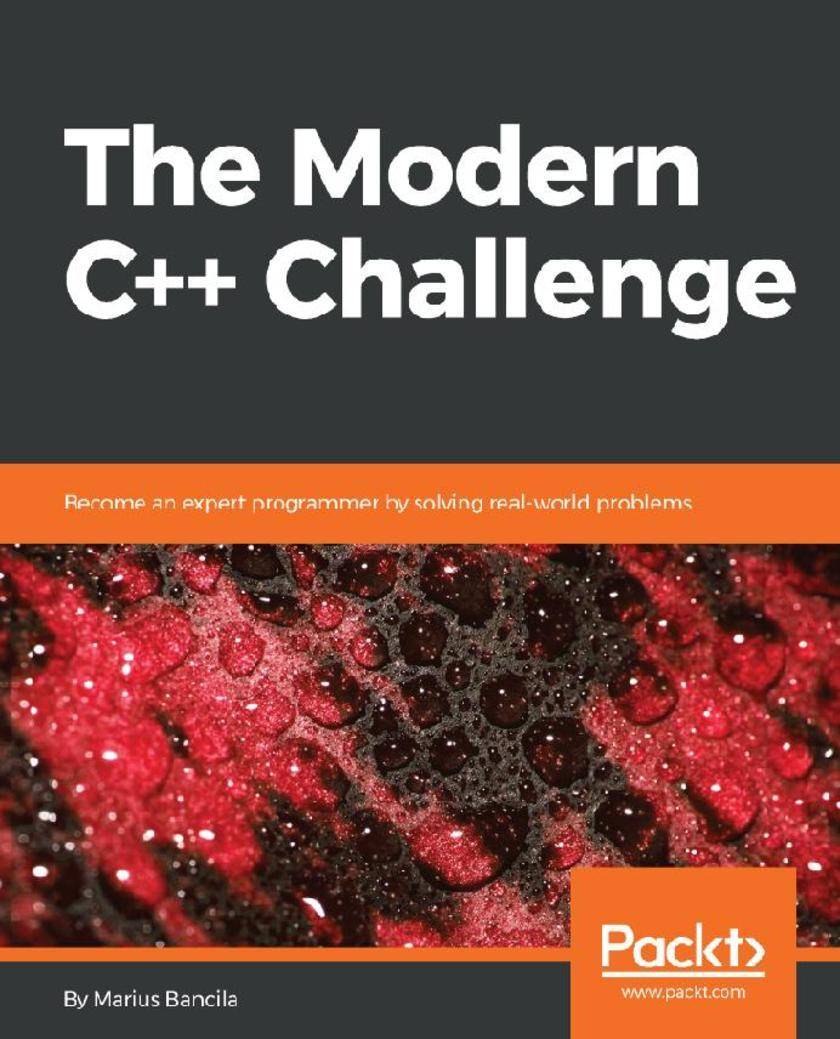
The Modern C++ Challenge
¥63.21
Test your C++ programming skills by solving real-world programming problems covered in the book About This Book ? Solve a variety of real-world programming and logic problems by leveraging the power of C++17 ? Test your skills in using language features, algorithms, data structures, design patterns, and more ? Explore areas such as cryptography, communication, and image handling in C++ Who This Book Is For This book will appeal to C++ developers of all levels. There's a challenge inside for everyone. What You Will Learn ? Serialize and deserialize JSON and XML data ? Perform encryption and signing to facilitate secure communication between parties ? Embed and use SQLite databases in your applications ? Use threads and asynchronous functions to implement generic purpose parallel algorithms ? Compress and decompress files to/from a ZIP archive ? Implement data structures such as circular buffer and priority queue ? Implement general purpose algorithms as well as algorithms that solve specific problems ? Create client-server applications that communicate over TCP/IP ? Consume HTTP REST services ? Use design patterns to solve real-world problems In Detail C++ is one of the most widely-used programming languages and has applications in a variety of fields, such as gaming, GUI programming, and operating systems, to name a few. Through the years, C++ has evolved into (and remains) one of the top choices for software developers worldwide. This book will show you some notable C++ features and how to implement them to meet your application needs. Each problem is unique and doesn't just test your knowledge of the language; it tests your ability to think out of the box and come up with the best solutions. With varying levels of difficulty, you'll be faced with a wide variety of challenges. And in case you're stumped, you don't have to worry: we've got the best solutions to the problems in the book. So are you up for the challenge? Style and approach A recipe-based approach where each problem is solved with the help of step by step instructions.
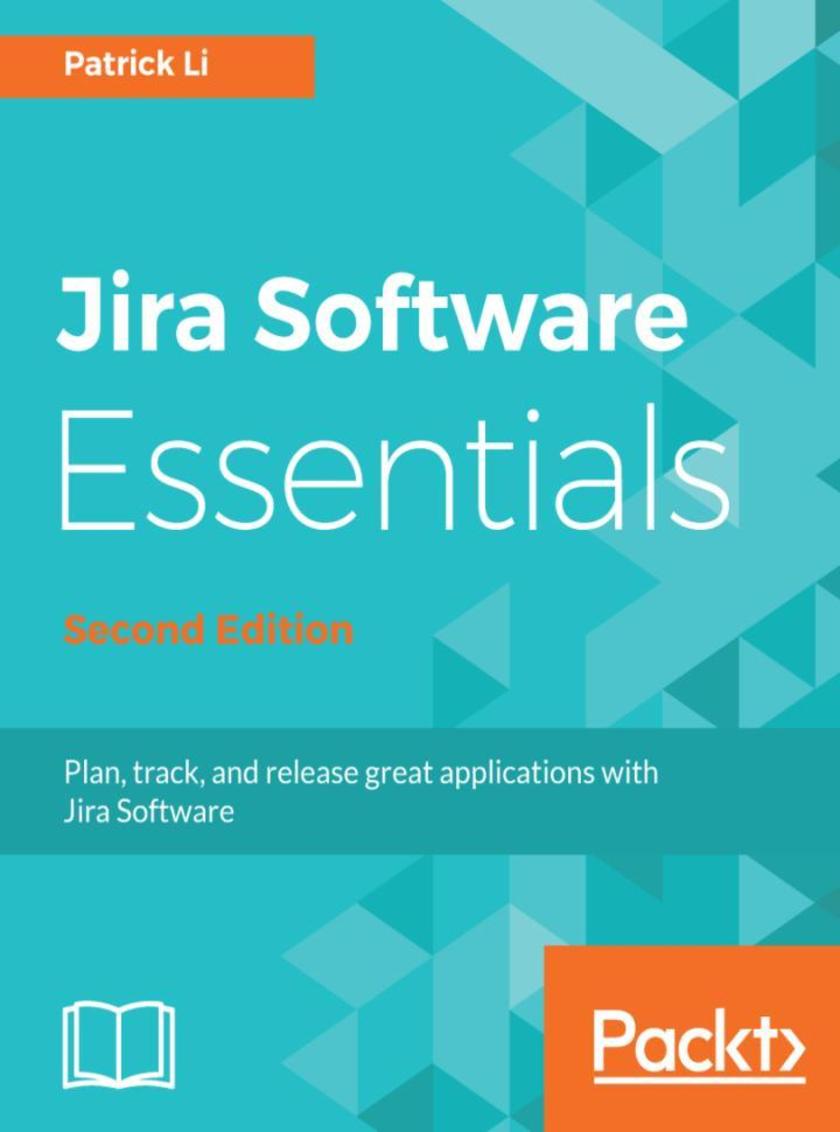
Jira Software Essentials - Second Edition
¥63.21
Explore Jira Software to manage your projects proficiently About This Book ? Plan and manage projects effortlessly with Jira Software by integrating it with other applications ? Improve your team's performance with Scrum and Kanban, together with agile methodology ? Easy-to-follow learning guide to install Jira Software and understand how it fits in with Atlassian Jira Who This Book Is For If you want to get started with Jira Software and learn how to run your Jira projects the agile way, then this is the perfect book for you. You will need to be familiar with the basics of Jira, both from an end user's and an administrator's perspective. Experience with workflows, custom fields, and other administrative functions of Jira will be useful. What You Will Learn ? Understand the basics and agile methodologies of Jira software ? Use Jira Software in a Scrum environment ? Manage and run Jira Software projects beyond the out of box Scrum and Kanban way ? Combine Scrum and Kanban and use other project management options beyond just agile ? Customize Jira Software’s various features and options as per your requirements ? Work with Jira Agile offline, and plan and forecast projects with agile portfolio ? Integrate Jira Agile with Confluence and Bitbucket In Detail Jira Software is an agile project management tool that supports any agile methodology, be it scrum, Kanban, or your own unique flavour. From agile boards to reports, you can plan, track, and manage all your agile software development projects from a single tool. Jira Software brings the power of agile methodology to Atlassian Jira. This second edition of JIRA Agile Essentials, will help you dive straight into the action, exploring critical agile terminologies and concepts in the context of Jira Software. You will learn how to plan, track, and release great software. This book will teach you how to install and run Jira Software and set it up to run with Scrum and Kanban. It will also teach you to use Jira Software your way and run projects beyond the out-of-box Scrum and Kanban way, including a hybrid approach of both the methodologies and other options that come with Jira Software. Later, you will learn how to integrate it with the tools you are already using and enhance Jira with add-ons such as Confluence. You will learn to stay connected with your team from anywhere to ensure great development. Jira Software has numerous deployment options in the cloud, on your own infrastructure, or at a massive scale. You will be introduced to Bitbucket, Atlassian’s distributed version control system, which integrates seamlessly with Jira, allowing your team to work within the two applications as one harmonious environment. With this practical guide, you will develop a great working knowledge of Jira Software and your project management will become much more efficient. Style and approach This practical book explains Jira Software with the help of detailed examples in a step-by- step manner.
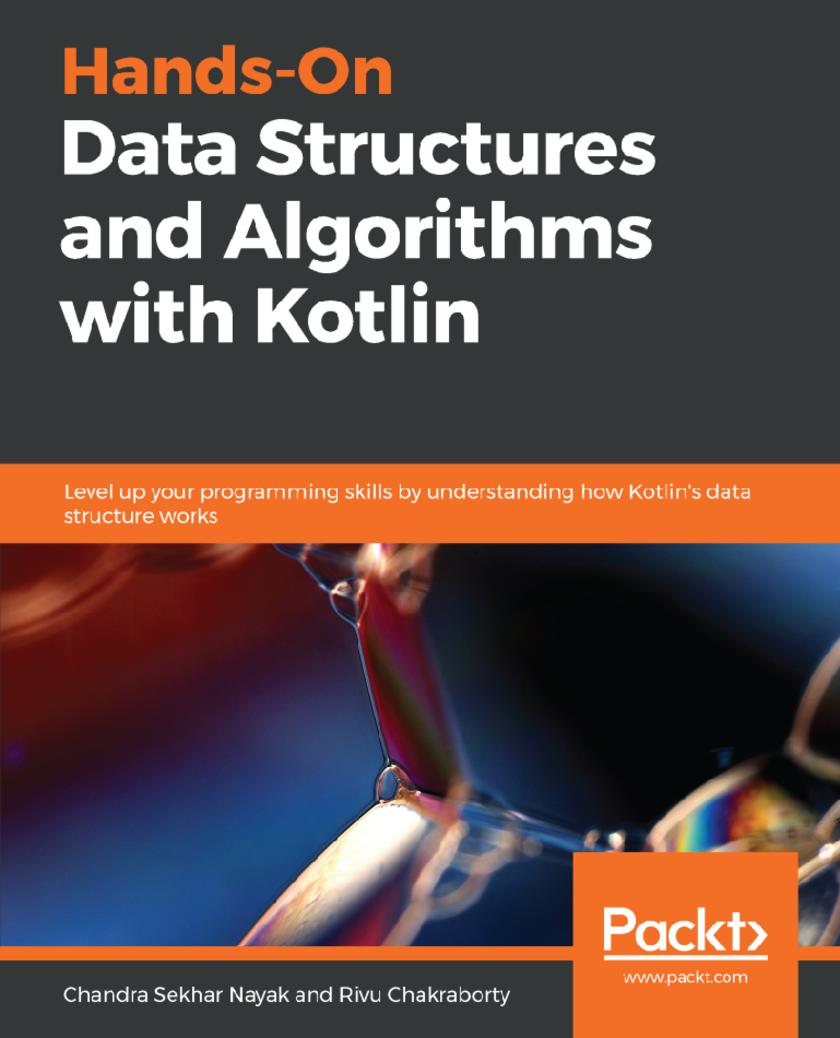
Hands-On Data Structures and Algorithms with Kotlin
¥63.21
Understand and solve complex computational problems and write efficient code with Kotlin Key Features * Learn about important data structures such as lists, arrays, queues, and stacks * Design custom algorithms for real-life implementations * Identify suitable tools for different scenarios and deliver immediate results Book Description Data structures and algorithms are more than just theoretical concepts. They help you become familiar with computational methods for solving problems and writing logical code. Equipped with this knowledge, you can write efficient programs that run faster and use less memory. Hands-On Data Structures and Algorithms with Kotlin book starts with the basics of algorithms and data structures, helping you get to grips with the fundamentals and measure complexity. You'll then move on to exploring the basics of functional programming while getting used to thinking recursively. Packed with plenty of examples along the way, this book will help you grasp each concept easily. In addition to this, you'll get a clear understanding of how the data structures in Kotlin's collection framework work internally. By the end of this book, you will be able to apply the theory of data structures and algorithms to work out real-world problems. What you will learn * Understand the basic principles of algorithms and data structures * Explore general-purpose data structures with arrays and linked lists * Get to grips with the basics of stacks, queues, and double-ended queues * Understand functional programming and related data structures * Use performant searching and efficient sorting * Uncover how Kotlin's collection framework functions * Become adept at implementing different types of maps Who this book is for If you're a Kotlin developer who wants to learn the intricacies of implementing data structures and algorithms for scalable application development, this book is for you.
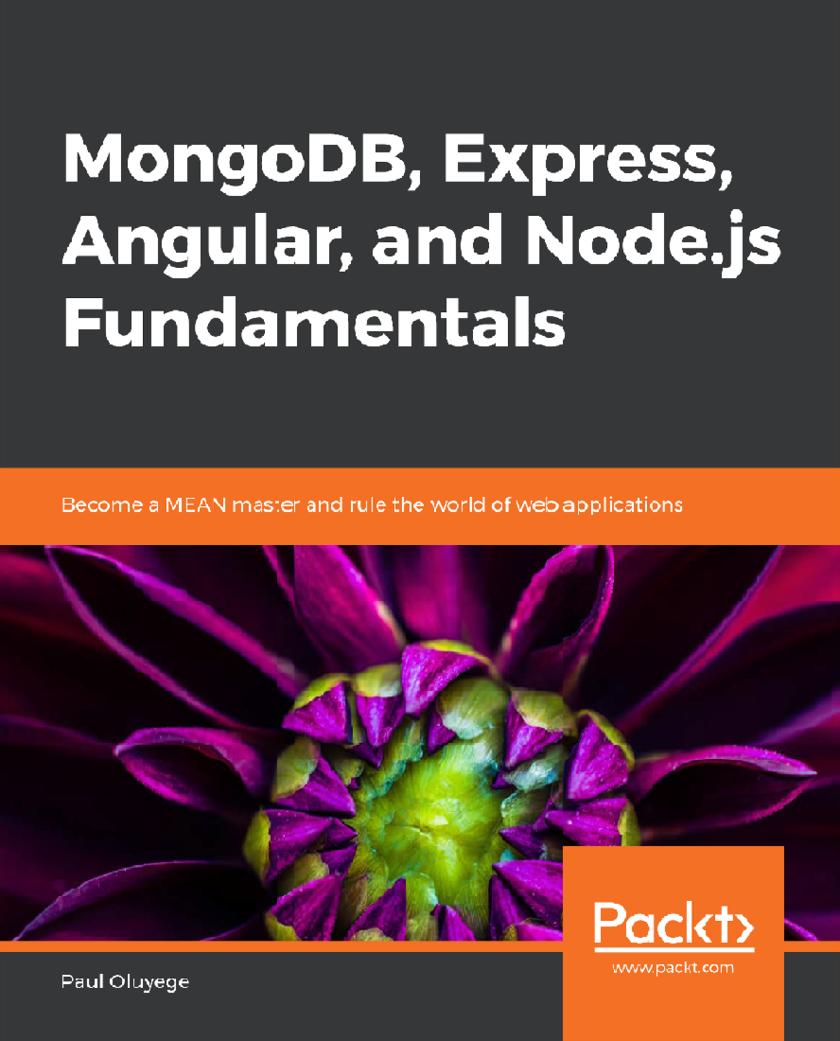
MongoDB, Express, Angular, and Node.js Fundamentals
¥63.21
Build fast, robust, and maintainable modern full-stack web applications using MongoDB, Express, Angular, and Node.js. Key Features * Build highly scalable, asynchronous, and event-driven APIs * Develop a user authentication system with MEAN * Build a full-fledged application using the MEAN stack Book Description MongoDB, Express, Angular and Node.js Fundamentals is a practical guide to the tried-and-true production-ready MEAN stack, with tips and best practices. The book begins by demystifying the MEAN architecture. You’ll take a look at the features of the JavaScript libraries, technologies, and frameworks that make up a MEAN stack. With this book, you'll not only learn how to develop highly scalable, asynchronous, and event-driven APIs quickly with Express and Node.js, but you'll also be able put your full-stack skills to use by building two full-fledged MEAN applications from scratch. You’ll understand how to build a blogging application using the MEAN stack and get to grips with user authentication using MEAN. As you progress through the chapters, you’ll explore some old and new features of Angular, such as pipes, reactive forms, modules and optimizing apps, animations and unit testing, and much more. By the end of the book, you’ll get ready to take control of the MEAN stack and transform into a full-stack JavaScript developer, developing efficient web applications using Javascript technologies. What you will learn * Understand the MEAN architecture * Create RESTful APIs to complete CRUD tasks * Build a blogging application with basic features * Describe best practices to secure node applications * Implement authentication and authorization * Creating simple animations using Angular * Perform unit testing on Angular applications Who this book is for If you are a beginner or intermediate frontend developer who wants to become full-stack JavaScript developer, this book is ideal for you. You'll need some prior exposure to MongoDB as we skim over its basics before getting straight to work.
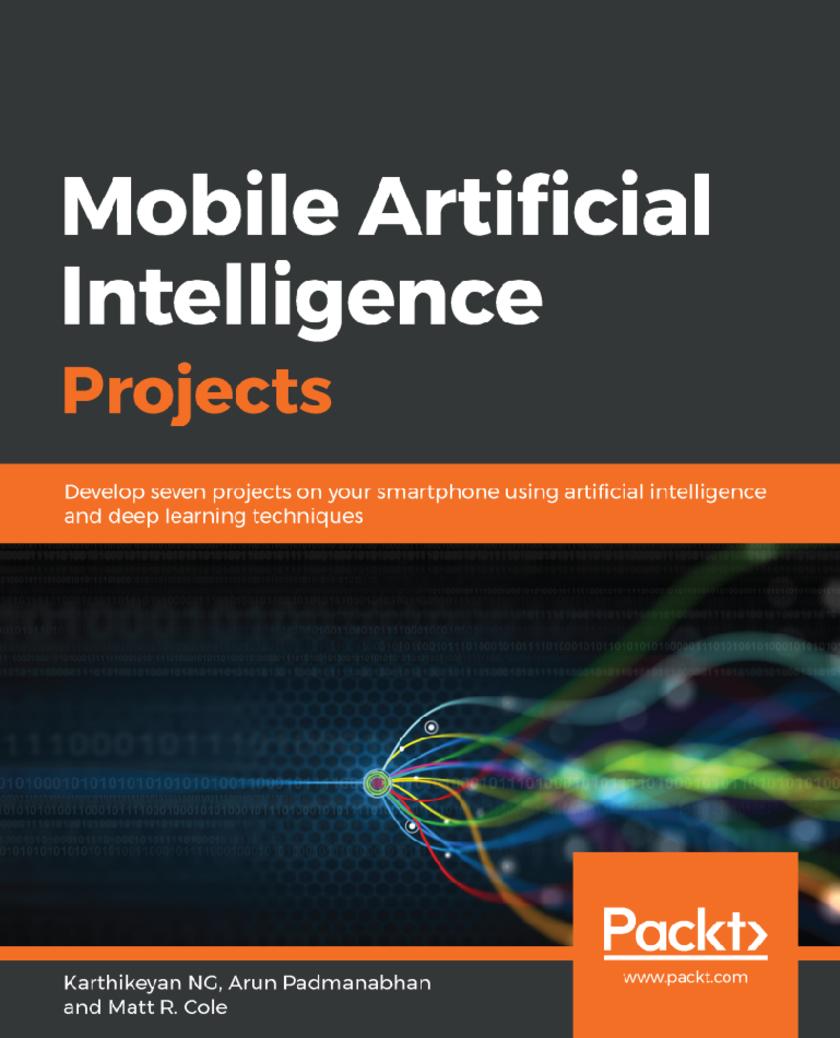
Mobile Artificial Intelligence Projects
¥63.21
Learn to build end-to-end AI apps from scratch for Android and iOS using TensorFlow Lite, CoreML, and PyTorch Key Features * Build practical, real-world AI projects on Android and iOS * Implement tasks such as recognizing handwritten digits, sentiment analysis, and more * Explore the core functions of machine learning, deep learning, and mobile vision Book Description We’re witnessing a revolution in Artificial Intelligence, thanks to breakthroughs in deep learning. Mobile Artificial Intelligence Projects empowers you to take part in this revolution by applying Artificial Intelligence (AI) techniques to design applications for natural language processing (NLP), robotics, and computer vision. This book teaches you to harness the power of AI in mobile applications along with learning the core functions of NLP, neural networks, deep learning, and mobile vision. It features a range of projects, covering tasks such as real-estate price prediction, recognizing hand-written digits, predicting car damage, and sentiment analysis. You will learn to utilize NLP and machine learning algorithms to make applications more predictive, proactive, and capable of making autonomous decisions with less human input. In the concluding chapters, you will work with popular libraries, such as TensorFlow Lite, CoreML, and PyTorch across Android and iOS platforms. By the end of this book, you will have developed exciting and more intuitive mobile applications that deliver a customized and more personalized experience to users. What you will learn * Explore the concepts and fundamentals of AI, deep learning, and neural networks * Implement use cases for machine vision and natural language processing * Build an ML model to predict car damage using TensorFlow * Deploy TensorFlow on mobile to convert speech to text * Implement GAN to recognize hand-written digits * Develop end-to-end mobile applications that use AI principles * Work with popular libraries, such as TensorFlow Lite, CoreML, and PyTorch Who this book is for Mobile Artificial Intelligence Projects is for machine learning professionals, deep learning engineers, AI engineers, and software engineers who want to integrate AI technology into mobile-based platforms and applications. Sound knowledge of machine learning and experience with any programming language is all you need to get started with this book.




 购物车
购物车 个人中心
个人中心



